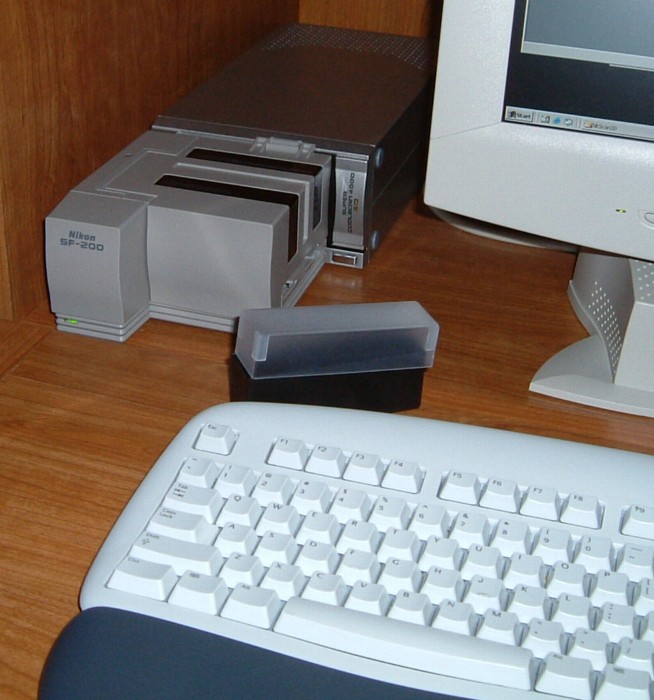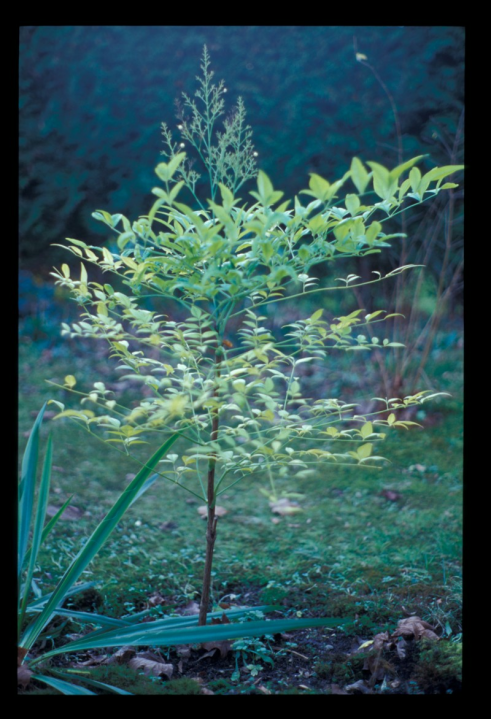
A previous entry reported on the acquisition of a Nikon CoolScan 4000 ED 35mm slide scanner; this is on the addition of an SF-200 slide feeder.
You might want to compare the picture above to the one in the previous article. The feeder reminds of one of those baby aliens trying for Sigourney Weaver; it covers the face of the 4000 ED and a lengthy proboscis plunges into the scannner's guts. You have to turn the scanner on its side, but it's set up for this with little nubby rubber feet in all the right places.
Loading is idiotically simple, it's advertised as taking 50 slides and I put in a roll of 39 with lots of room to spare, so that's probably accurate.
It took more than a little poking around and swearing to figure out how to get the Nikon software to drop into batch mode; you have to make sure there's not a slide actually engaged, and the silly scanning-details window has to be up even though it isn't used and makes it hard to get at the control window.. anyhow. But then you just press "go" and it's off. At this point you want to go get dinner or revise your quarterly forecasts or give your sweetie a back-rub or something; it took about two hours to work its way through the 39 slides, to the accompaniment of cheerfully industrious little klunks and buzzes.
Here's where it gets interesting; as an experiment, rather than the (65MB a shot!) TIFF files, I told it to use JPEG with the compression setting on "Excellent". This produced 20MB JPEGs (at odd resolutions like 5700x3700, hmm), which I'm inclined to think are acceptable for archival purposes (anyone disagree?) and are only 20MB or so on average. That means, after you've dumped the duds, you can reasonably expect to burn a roll of film onto a single CD-ROM, which is very convenient.
A bit of looking around the Net reveals reports of problems with older slides tending to jam, but also reveals a way to work around this by fastening a credit card to the right place in the feeder's innards.
There were only a few keepers on the roll of film we tried it out on, and the best were family shots, but below is an existence proof that it can be done. Obviously, cut down to a sane Web-appropriate resolution.
“Heavenly bamboo” (Nandina domestica) - not
bamboo at all really, but a lovely plant.
A final observation: For wrangling these mega-JPGs, Paintshop Pro on an Athlon 1800+ running Win2K is way quicker than Graphic Converter on a 500MHz OS X Powerbook (both machines 512M).

